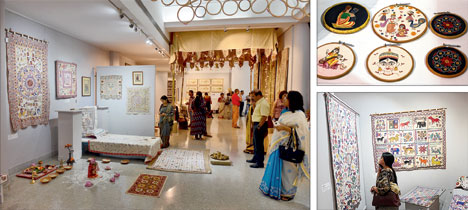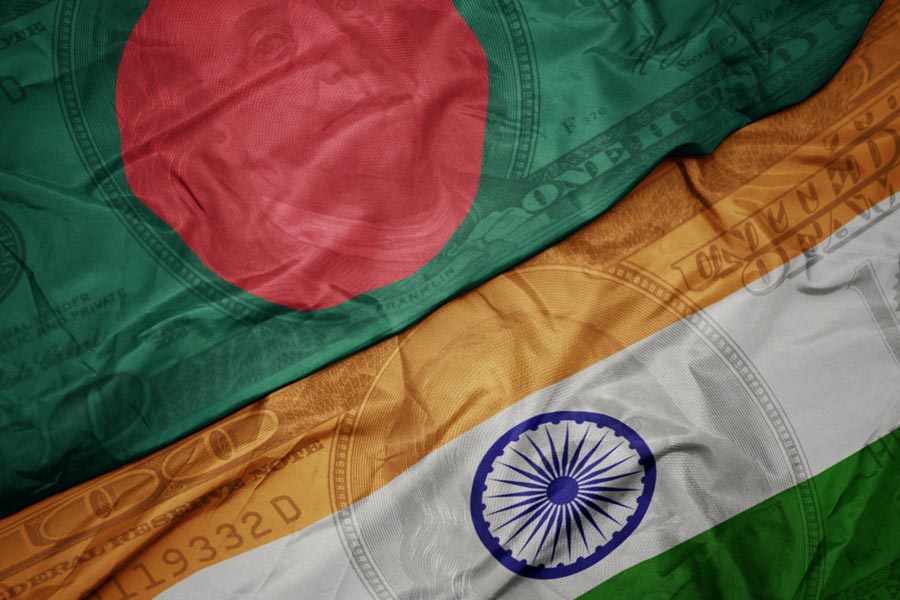
Southern Avenue: It is not always easy to remember these days that the kantha was once a homely piece of cloth embroidered by a woman for a newborn, or her family, a personal, intimate expression of her love, memories or aspirations. Made of used saris held together by running stitches, a kantha's soft touch, its smell, its ageing material and its patterns came with the feel almost of a mother's body.
Kantha now is a big brand, one of Bengal's better-known products, recognised everywhere in India. Which is good, and maybe not.
Two things happened since "a price value was added to the personal expression" that was kantha, said Ritu Sethi, director, Crafts Revival Trust, New Delhi, speaking at a seminar on kanthawork on Friday afternoon at Birla Academy of Art & Culture in the city.
One, kanthas began to be mainly worked on by women from low-income families, who do it for their livelihood. Two, this kantha was made for a distant market. The seminar was one of the events planned around Eye of the Needle, an ongoing exhibition on kantha organised by the Crafts Council of West Bengal, in its 50th year, in association with and at Birla Academy.
Many eminent personalities have shaped kantha's journey, Sethi pointed out, from the days of Sriniketan, where Tagore's rural development project was located, and Stella Kramrisch, till the present day. After Partition, kantha embroidery was used as a way to provide livelihood to displaced women from across the border. Sculptor Mira Mukherjee's contribution to the craft is remarkable, as are the efforts of Shamlu Dudeja and Ruby Palchoudhuri.
Though the running stitch remains, kantha now is primarily a gorgeous sari or a blouse, shawl, dupatta, stole and numerous accessories, providing economic empowerment for many women workers. Even as kantha has empowered women who have made its craft a contemporary statement, it has changed from being an expression of a woman's life to one of her livelihood, and this new mode of production has led to "context-free embroidery", said Sethi.
This decontextualisation, which is the problem with many Indian crafts gaining popularity in the mass market, poses a threat to the traditional craft. Sometimes, what is touted as kantha does not even look like kantha, Sethi said. And in some places printed material is passed off as kantha, she added. One has to look at the women's lives, especially how they have been hit by demonetisation and the GST.
Previous speakers had spoken more about the traditional craft. Mohua Lahiri, a designer who teaches at NIFT, Calcutta, had spoken in detail on the motifs used in traditional kantha that recur in other Indian folk arts and sculpture. She, too, had warned about the dilution of the traditional form to accommodate experimentation.
Paola Manfredi from Italy, who has worked on the history of exchange of textiles between the East and the West, had spoken especially about the "Trees of Life" in the kantha landscape. This "sacred botany", of which the kalpataru (the famous Wishing Tree) is an example, is too complex to be composed into a linear structure. But among other things, it represents the fertility of nature.
Niyaz Zaman, scholar, writer and publisher from Bangladesh, in her paper titled The Sacred and the Secular in the Nakshi Kantha, spoke about the different Hindu and Muslim iconographies in traditional kantha. She reminded that one reason a newborn was swaddled in kantha made of old rags was child mortality: in their fear about the child's survival, the women would not dare to think of a future, and new clothes meant that.
Pika Ghosh, who teaches at the department of religion at Haverford College, Philadelphia, spoken about art historian Kramrisch's relationship with kantha. Kramrisch, who had taught at Kala Bhavana in Santiniketan, and later at the University of Pennsylvania, had taken the kantha out of Bengal, literally. Ghosh mentioned that Kramrisch only had kanthas with Hindu iconography in her collection.
The kantha exhibition, showing till May 13, comes with some exquisite pieces, old and new. Some of the older ones, quilts or ashans, a few of them from the 19th century, are extraordinary. With the traditional motif of the lotus/mandala at the centre and their two dimension designs, they manage to look fuller and more robust than the contemporary renditions.











